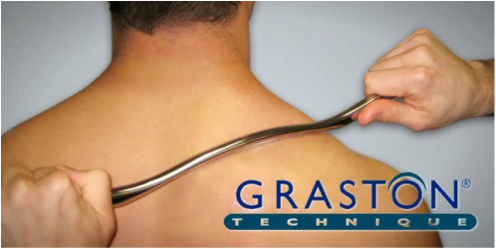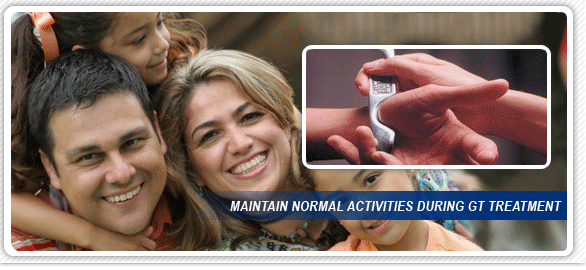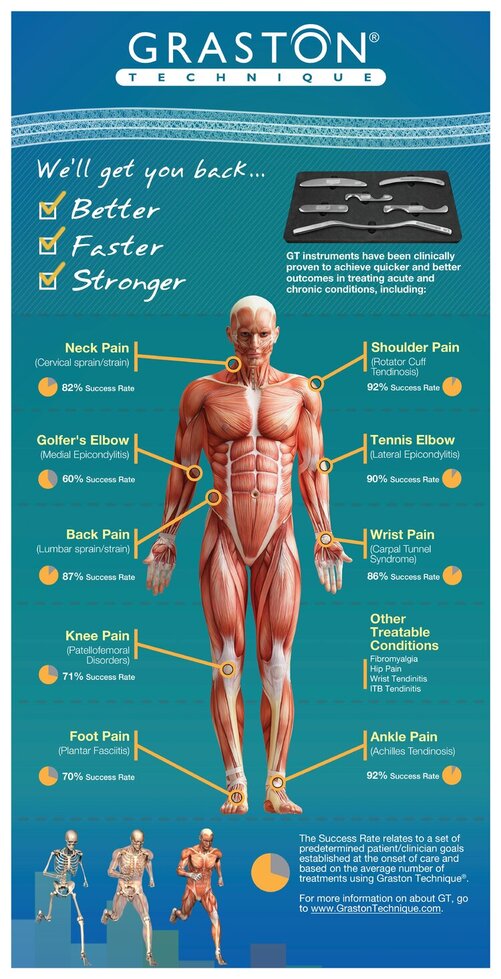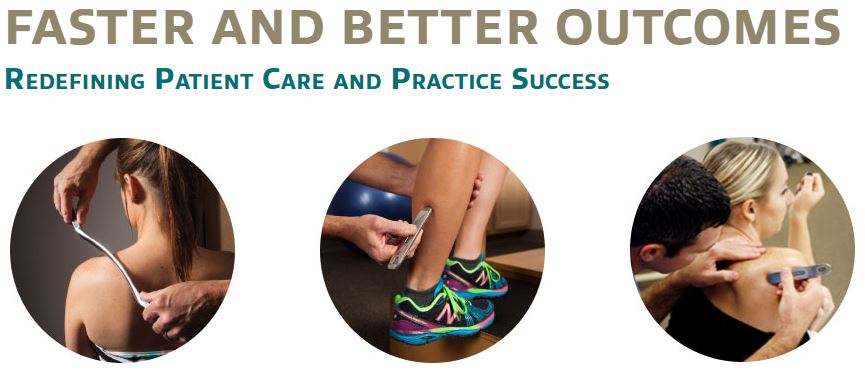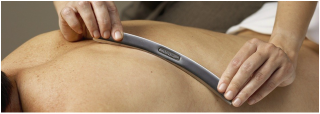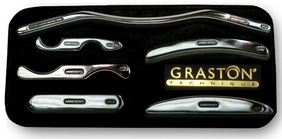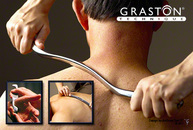Graston Technique
|
About Graston Technique®
Changing the way soft tissue injuries are treated Graston Technique® is an evidence-based form of instrument-assisted soft tissue mobilization that enables clinicians to effectively address scar tissue and fascial restrictions through comprehensive training, resulting in improved patient outcomes. The technique uses specially-designed stainless steel instruments, along with appropriate therapeutic exercise, to specifically detect and effectively treat areas exhibiting soft tissue fibrosis or chronic inflammation. The instruments also are used diagnostically to follow the kinetic chain, to locate and treat the cause of the symptom as well as the specific area of pain. Originally developed by athletes, Graston Technique® is a unique evidence-based form of instrument-assisted soft tissue mobilization used by more than 22,650 clinicians worldwide — including physical and occupational therapists, hand therapists, chiropractors, and athletic trainers. Graston Technique® is utilized at some 2,700 outpatient facilities and 77 industrial sites, by more than 384 professional and amateur sports organizations, and is part of the curriculum at 45 respected colleges and universities. |
Originally developed by athletes, Graston Technique ® is an innovative, patented form of instrument-assisted soft tissue mobilization (IASTM) that enables clinicians to effectively break down scar tissue and myofascial restrictions. The technique utilizes specially designed stainless steel instruments to specifically detect and effectively treat areas exhibiting soft tissue fibrosis or chronic inflammation.
It has been shown to successfully treat all soft tissue conditions, whether chronic, acute, or post-surgical. Conditions commonly treated by Graston include: Carpal Tunnel Syndrome, Gluteus medius tendonosis, Trochateric Bursitis, Rotator Cuff Tendonitis, Achilles tendonitis, Plantar Fascitis, Tennis Elbow (lateral epicondylitis), ITB syndrome, and headaches.
As a result of its unique ability to detect and break up scar tissue, the Graston Technique offers numerous advantages to the patient:
· Decreases overall time of treatment
· Fosters faster rehabilitation/recovery
· Reduces need for anti-inflammatory medication
· Resolves chronic conditions thought to be permanent
· Reflex changes in the chronic muscle holding pattern
· Increases the rate and amount of blood flow to and from the area
It has been shown to successfully treat all soft tissue conditions, whether chronic, acute, or post-surgical. Conditions commonly treated by Graston include: Carpal Tunnel Syndrome, Gluteus medius tendonosis, Trochateric Bursitis, Rotator Cuff Tendonitis, Achilles tendonitis, Plantar Fascitis, Tennis Elbow (lateral epicondylitis), ITB syndrome, and headaches.
As a result of its unique ability to detect and break up scar tissue, the Graston Technique offers numerous advantages to the patient:
· Decreases overall time of treatment
· Fosters faster rehabilitation/recovery
· Reduces need for anti-inflammatory medication
· Resolves chronic conditions thought to be permanent
· Reflex changes in the chronic muscle holding pattern
· Increases the rate and amount of blood flow to and from the area
Graston InfoGraston Technique® is successful in effectively treating all soft tissue conditions, whether they are chronic or acute and post surgical. The Graston Technique® offers many advantages to the patient such as:
|
Instrumentsix stainless steel instruments form the cornerstone of Graston Technique®
The curvilinear edge of the patented Graston Technique® Instruments combines with their concave/convex shapes to mold the instruments to various contours of the body. This design allows for ease of treatment, minimal stress to the clinician's hands and maximum tissue penetration. The Graston Technique® Instruments, much like a tuning fork, resonate in the clinician's hands allowing the clinician to isolate adhesions and restrictions, and treat them very precisely. Since the metal surface of the instruments does not compress as do the fat pads of the finger, deeper restrictions can be accessed and treated. When explaining the properties of the instruments, we often use the analogy of a stethoscope. Just as a stethoscope amplifies what the human ear can hear, so do the instruments increase significantly what the human hands can feel. |
Conditions TreatedThe Graston Technique® (GT) Instruments, while enhancing the clinician's ability to detect fascial adhesions and restrictions, have been clinically proven to achieve quicker and better outcomes in treating both acute and chronic conditions, including:
|
Instrument Assisted Soft Tissue Mobilization
What is IASTM?
Instrument Assisted Soft Tissue Mobilisation IASTM is a soft tissue technique which enables clinicians to efficiently locate and treat individuals diagnosed with soft tissue dysfunction.
How does it work?
Instruments effectively break down fascial restrictions and scar tissue. The ergonomic design of these instruments provides the clinician with the ability to locate restrictions and allows the clinician to treat the affected area with the appropriate amount of pressure.
Instrument Assisted Soft Tissue Mobilisation IASTM is a soft tissue technique which enables clinicians to efficiently locate and treat individuals diagnosed with soft tissue dysfunction.
How does it work?
Instruments effectively break down fascial restrictions and scar tissue. The ergonomic design of these instruments provides the clinician with the ability to locate restrictions and allows the clinician to treat the affected area with the appropriate amount of pressure.
